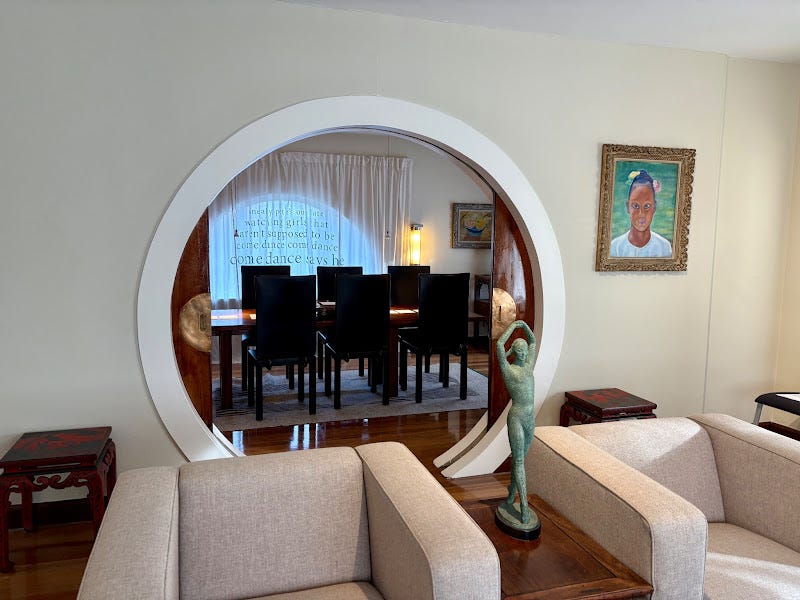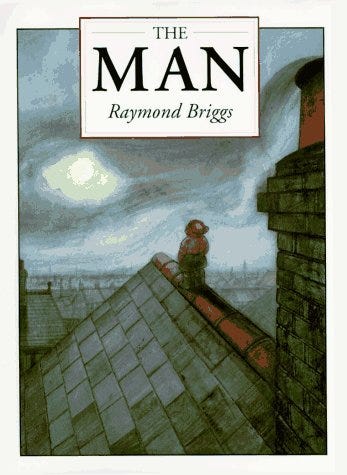Eclectic Letters #14 — Phoebe Arslanagić-Little
Uccello’s St George and the Dragon paintings, a Lutyens documentary, Algernon Blackwood's horror stories, Dorich House, and a great children's book
Uccello’s St George and the Dragon paintings
A few weekends ago in Paris, I saw this painting of St George slaying the dragon, by Florentine master Paolo Uccello, in the Jacquemart-André museum. I thought I had seen it before but later realised that I was in fact familiar with a later version of the same painting, done by Uccello some forty years on in 1470.
It is striking just how much better Uccello’s second version, pictured below, is. The first dragon is a silly, toy dragon. The second is a sinister reptile that I believe bleeds. We can also see Uccello’s mastery of linear perspective improving between the two works (and his ability to paint a convincing cave).
The second version of the painting was stolen by the Nazis from its owner, a Polish count and patron of the arts. It probably spent some time in an Austrian salt mine before being recovered by the American army. You can see it in the National Gallery in London.
Edwin Lutyens Master Architect documentary
This 1981 documentary about the architect Edwin Lutyens is my favourite documentary and the most enjoyable way to learn about a great British architect who was famed in his own time but is hugely under-appreciated today. Lutyens’s achievements include the last castle to be built in Britain, the Cenotaph on Whitehall, the Midland Hotel in Manchester, and what is today the official residence of the Indian President.
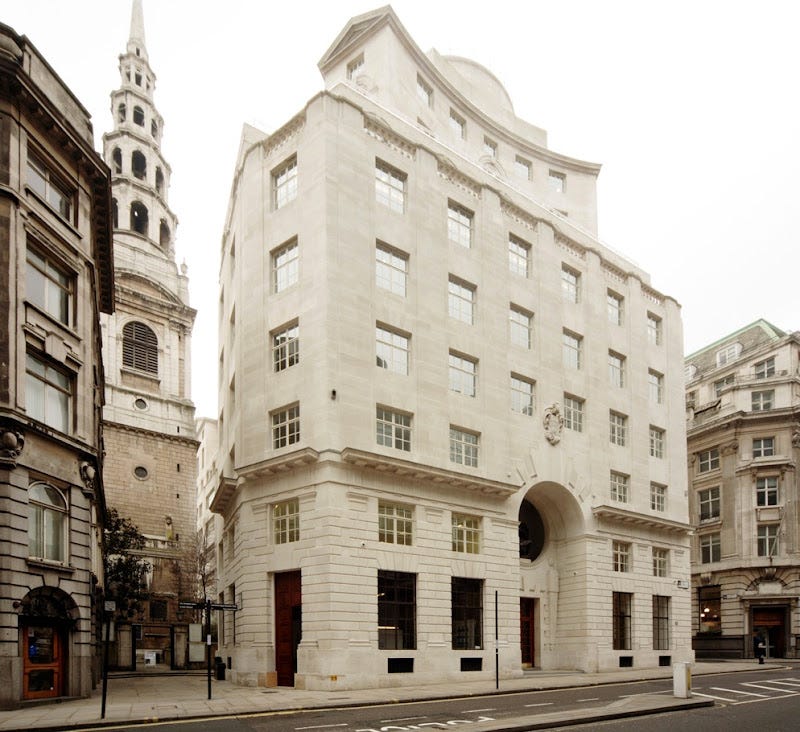
The horror stories of Algernon Blackwood
Unsettling stories were very popular in Victorian and Edwardian times, but a great deal of them were extremely bad. The majority of Conan Doyle’s gothic short stories are astonishingly poor efforts, including one about man-eating plants, which you can read here. My assumption is that these stories were viewed by their authors as a type of ephemera and were published in magazines for a quick buck, possibly commissioned at very short notice.
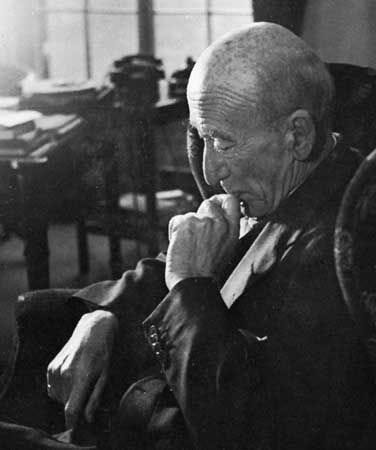
But the greatest and most genuinely frightening of the Victorian gothic authors were Algernon Blackwood and E. F. Benson, in that order. My favourite Blackwood story is the potent and terrifying “The Wendigo” (here), about a Canadian moose-hunting trip gone wrong. But “The Willows” (here), in which two friends travel down the Danube and find themselves touching upon a strange and dangerous other world, is more typically considered his best.
If you read much E. F. Benson you will quickly start to find him repetitive and get to know his little tricks too well, but I always return to the brief and delicious “The Man Who Went Too Far” (here).
Perhaps the best way to enjoy Blackwood and Benson is via an audiobook collection.
Dorich House
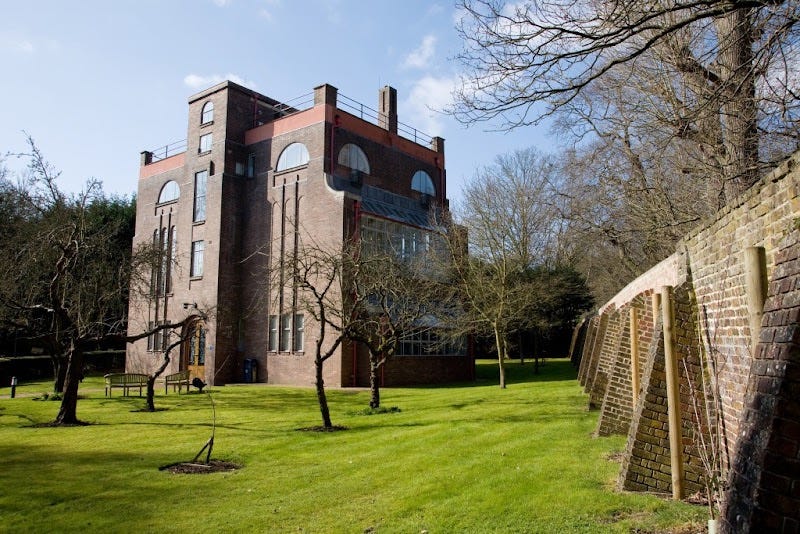
It turns out that I have lived near Dorich House all my life. But I did not notice it until my pregnancy last year, often driving past it on my way to Kingston Hospital’s maternity unit.
Now a free museum, Dorich House was designed in the 1930s by the sculptor Dora Gordine (who I had never heard of) to be her studio and the home of herself and her husband. I have never seen anything quite like Dorich House, which is extremely hard to categorise in architectural stylistic terms. The House was heavily and tenderly restored in the 1990s, after a period of being lived in by squatters, and is today owned by Kingston University.

Dorich House also functions, as intended originally, as a gallery for Gordine’s sculpture, bathed in the light that pours in from the half moon windows. But most of Gordine’s work leaves me cold and it is really the House itself, inside and out, that compels. At the top of the house is the stylish 1930s apartment that Gordine and her husband actually lived in, and a terrace that overlooks Richmond Park.
A great children’s book
Lots of books for very young children are dull. Some of them read like they were written by an early version of ChatGPT (including many of the Elmer the Patchwork Elephant series, a brilliant concept ruined by bad storytelling). But some are really very good, and I am now enjoying a branch of literature that I have neglected for more than twenty years.
My favourite picture book that I have rediscovered is The Man by Raymond Briggs (of Snowman fame). The Man is about a boy who wakes up to find a miniature naked man in his room, demanding to be clothed and dressed.
The bad-tempered man is ruthlessly critical of the boy’s vegetarian, brown bread-eating and Earl Grey tea-drinking mother (he prefers PG Tips). The man is also racist, homophobic and generally intolerant, making fun of the boy for reading a book about Degas. The story is purely dialogue, including bitter arguments between the boy and the man over whether the boy is treating the man like a pet, or whether the boy is the one being exploited. I find myself genuinely uncertain what age The Man is aimed at, but I am fairly sure it must be for the under-10s. It is funny, sad, and unsentimental.
Phoebe works on the birth rate challenge at the Boom Campaign and at the New Deal for Parents at Onward. Follow her on Twitter.








